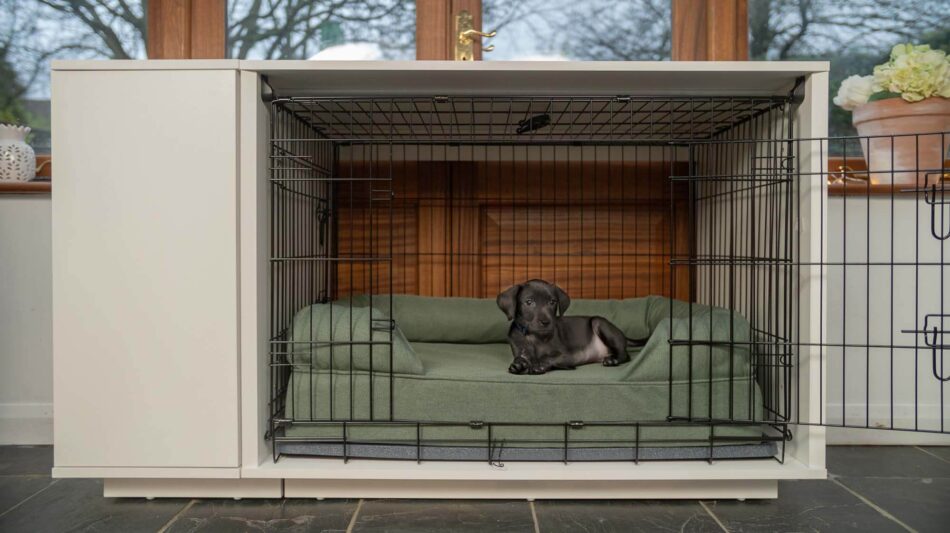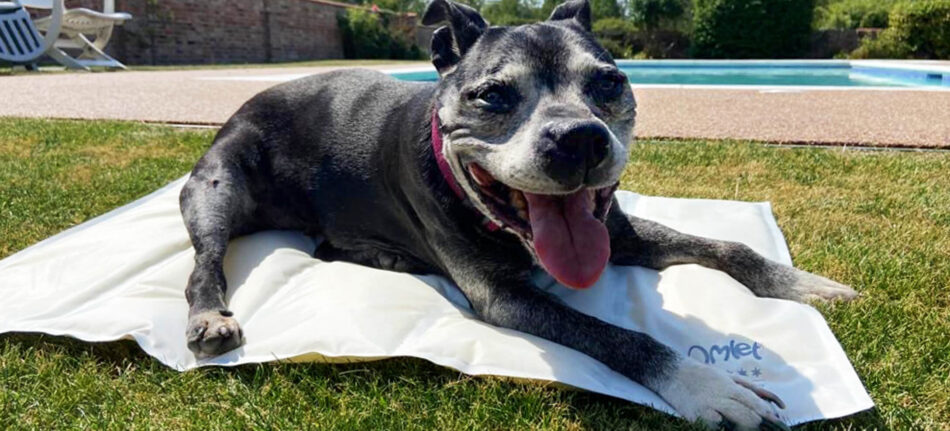From Puppy to Prime – The Ageing Stages of Dogs
If you have ever raised a child from baby to adult, you know all too well the joys, headaches, tribulations, and rewards that come with that experience. But what about raising a four-legged baby? You know, the kind that has fur, a wagging tail, and slobbery kisses for days. Is raising a dog the same as raising a human? Our fur babies may not be able to communicate what they want as well as human babies, but that doesn’t make them any less a member of the family. To build and maintain an everlasting bond with our dogs, it is essential that we understand their needs in every stage of life.
As discovered in our previous blog, How Old Is Your Dog In Human Years, our canine companions age much faster than their human brothers and sisters. A poignant reminder that every moment counts and each cuddle could last a little longer. So how long is a dog considered a baby? When do you know if your pup has officially entered the scary, yet delightful, teenage years? And how can we better support our senior pups in their prime as they slow down? Here is a helpful list to guide you and your dog through these precious stages together.
Puppyhood
The cuteness overload puppy years! This is the time when your fur baby still has that intoxicating puppy smell and abounding energy. Depending on the dog breed, this stage of a dog’s life is usually between birth and 18-24 months. Just like humans, this early phase of development is where your dog will learn basic socialisation skills. You want your fur baby to be a part of the family, right?
There are several different ways to engage your energetic and curious puppy. Spend lots of time during this stage talking to them, petting them, and teaching them all the rules like potty outside, sleep through the night, and don’t chew on the furniture. Your pup will also grow the most during this stage of life, so good quality nutrition and veterinary care are also essential in making sure fido flourishes. Puppies can be a lot of work, but with consistent routines and training, you will have a teenager (eek!) before you know it!
Adolescent to Adult
What’s that? No exhausting toddler years to navigate with dogs? That’s right! Most pups will reach “adulthood” by the age of 3, which means the adolescent teenage years are short depending on the dog breed. Smaller breed dogs, such as Chihuahuas and Dachshunds, become teenagers around 6 months old, while larger breed dogs, such German Shepherds and Great Danes, become adolescents around 3 years of age. While most of the obedience training occurs during the puppy years, you want to continue positively reinforcing good behaviour at this stage. Adolescent dogs are a lot like adolescent humans – they will start to test the boundaries around this age. Just when you thought you mastered the “sit, stay, shake” commands, your adolescent to adult dog will start to challenge you by ignoring these learned behaviours, so don’t fall asleep at the wheel, or leash.
Mental stimulation is also important across all developmental stages, so keep your teenager pup engaged with lots of activities like fetch, doggie play dates, and games. The key to this stage? A tired dog is a well-behaved dog! And don’t forget your dog’s health and hygiene which is important regardless of age. Most healthy adult dogs still need consistent exercise and, depending on dog breed and temperament, that could be up to 25 mins a day. So make it a family affair – grab both your teenage human and teenage dog and get everyone out on a walk!
Prime Senior
Just because your fur baby is now a fur senior doesn’t mean you have to start looking into retirement homes for your canine companion. Older dogs are still active dogs! If you have had your fur baby since puppyhood, you may start to notice your now white-muzzled pup slowing down the pace a bit around age 6. Perhaps you notice yourself slowing down a bit as well to mirror their behaviour and better care for their changing needs. That’s a good thing! Instead of one long walk each day, consider taking your senior on a few short walks to maintain exercise without exhaustion. You may find you like this new change of pace as well!
Many prime senior pups will also start to change behaviours at this stage with some mobility and cognitive changes, so it is important to keep up with regular vet care visits to monitor any significant issues. Can’t teach old dogs new tricks? Nonsense! Older dogs can absolutely learn new tricks, but just like senior humans, keep the food rewards to a minimum as metabolism starts to slow down in this stage. In addition, some older dogs may begin to have joint problems around this stage, so ensuring you have a comfortable and supportive dog bed is critical. The Omlet Topology Luxury Dog Bed is a great option to customise a sleeping solution fit for a king, or queen, senior. Regardless of dog breed, older dogs of all shapes and sizes are still as enjoyable and lovable as puppies!
Pet owners know that taking care of a dog, at any stage of life, is a commitment full of work and reward. Whether you have a bouncing puppy that is still learning how to walk on a leash or a prime senior who loves to just lay in the sun, there is much to be gained from every stage of a canine’s life. And even though our fur babies are not around as long as our human babies, it goes without saying that the love they give is invaluable no matter what age. So enjoy every moment of every stage!
This entry was posted in Uncategorised

